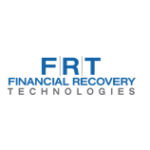[ WEBINAR TRANSCRIPT ] What’s Driving Changes in the Australian Shareholder Class Action Landscape
Our May webinar on ‘What’s Driving Changes in the Australian Shareholder Class Action Landscape‘ highlights the the potential changes impacting the Australian Shareholder Class Action landscape.
- High Court of Australia’s recent decision – How does the recent decision eliminating the power of lower courts to make common fund orders impact the market?
- Common Fund Orders – Before being prohibited, how did common fund orders impact things? What were the benefits?
- Current Market Reactions – How have organisers reacted? What workarounds are being tried?
- Australia’s Settlement Process – How does the elimination of common fund orders change the settlement process? How does the settlement process work today? Does the elimination of common fund orders change the settlement process?
We’ve gathered some of the key quotes from this 30-minute webinar. You can download the full transcript to the webinar here.
Impact of Common Fund Orders
- “Common fund orders eliminated the need for this book building process. Instead, cases could be filed open and with a common fund order, the court essentially picked one of the fee arrangements offered by the competing funders.” -Mike Lange, Senior Vice President of Worldwide Litigation, Financial Recovery Technologies
Reaction to the High Court of Australia’s recent decision
- “Right now we’re in a period of flux with different workarounds being tried and the key will be landing on one that permits continued filings on an open basis. If that happens, and from the investor’s perspective, things will continue to look much as they look now.”-Mike Lange, Senior Vice President of Worldwide Litigation, Financial Recovery Technologies
Current Workarounds
- “Short term, there are three things being considered; equalization orders, closed classes and open classes with lawyers charging conditional fees. Longer-term external forces could reassert common funds or something similar, or may shift further contingency fee economics from those funders to the lawyers.” -Mike Lange, Senior Vice President of Worldwide Litigation, Financial Recovery Technologies







